Docker Universal Control Plane (UCP) is the enterprise-grade cluster management solution from Docker. You install it behind your firewall, and it helps you manage your whole cluster from a single place
Docker UCP can be installed on-premises, or on a virtual private cloud. And with it, you can manage thousands of nodes (e.g. 1000 ec2 instances with 50,000 containers has been tested and in some cases with 100,000 containers) as if they were a single one. You can monitor and manage your cluster using a graphical UI.
Installation
Follow these instructions – here
Dashboard
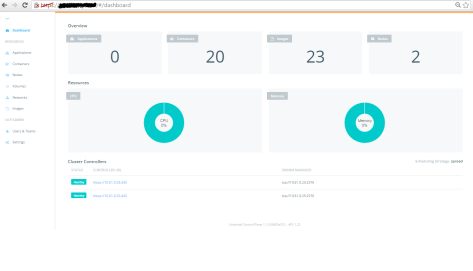
In the above picture, you can see that we installed UCP with two controller nodes – In general for HA , it is recommended to use 3 controller nodes minimum.
On each controller node – you will find approx. containers that address different capabilities running on various ports as follows.
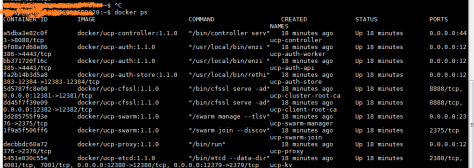
Built-in security and access control
Docker UCP has its own built-in authentication mechanism, and supports LDAP and Active Directory. It also supports Role Based Access Control (RBAC). This ensures that only authorized users can access and make changes to cluster.
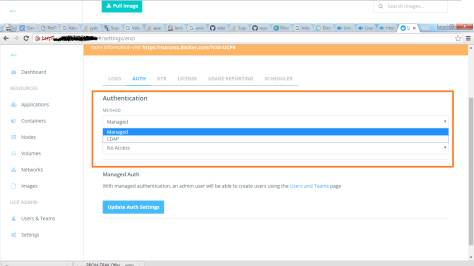
There are generally teams and users – grouping.
Role access – view only, restricted only, full admin control.
Docker UCP also integrates with Docker Trusted Registry and Docker Content Trust. This allows you to keep your images stored behind your firewall, where they are safe. It also allows you to sign those images to ensure that the images you deploy have not been altered in any way
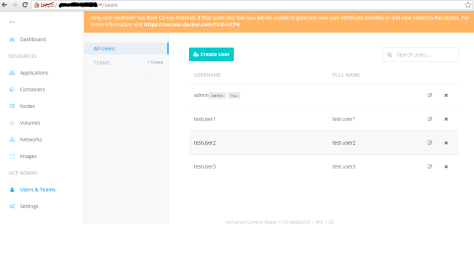
Create an integrated Micro-Service Application
Assuming your micro-serviced application has already defined the composite application, you can quickly spin up your application like this. In the below example , selenium grid is a micro-service application that launches a chrome and firefox node.




Containers View

Nodes
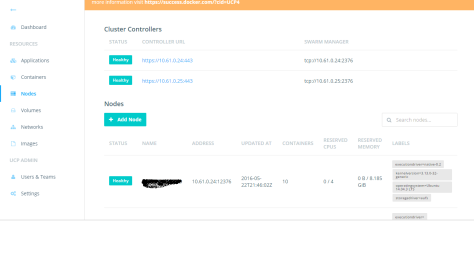
Volumes
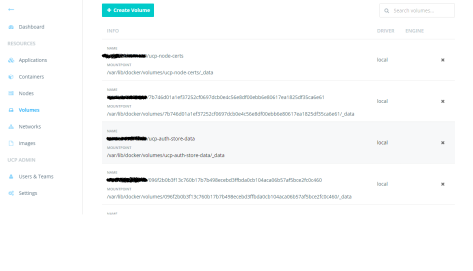
Networks
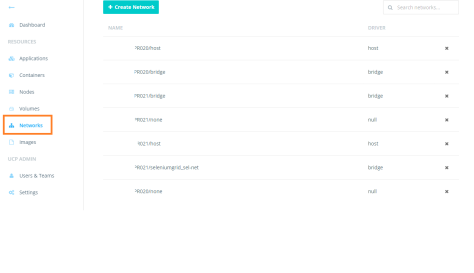
Images

Restart UCP
docker run --rm -it \ --name ucp \ -v /var/run/docker.sock:/var/run/docker.sock \ docker/ucp \ restart [command options]
Remove/Uninstall docker node from UCP
docker run --rm -it \ --name ucp \ -v /var/run/docker.sock:/var/run/docker.sock \ docker/ucp \ uninstall --interactive